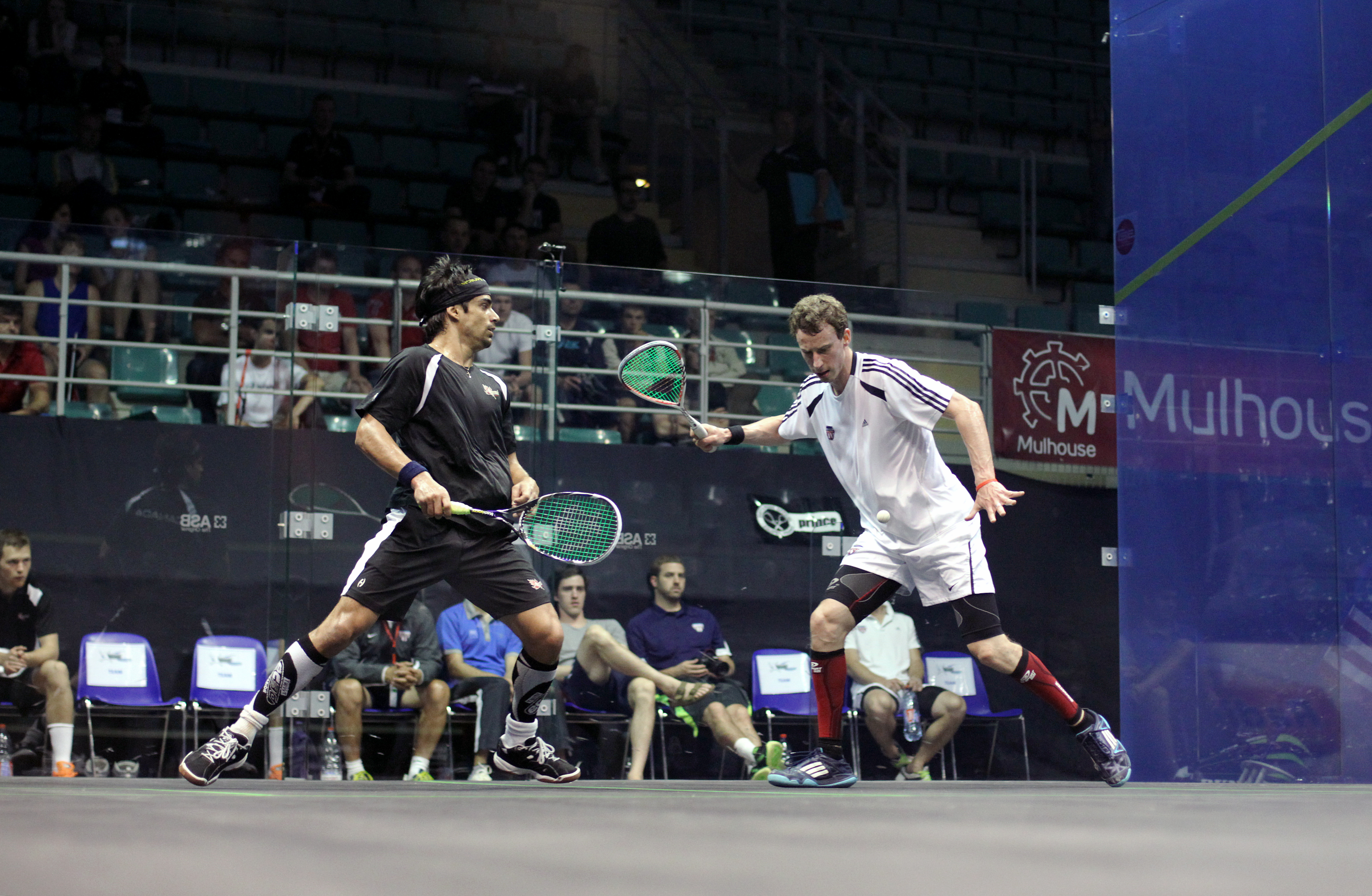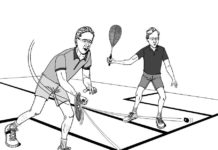By Barry Faguy, WSF Referees and Rules Committee
HEY REF! My opponent asked for a let because she got hit by my follow-through as she was moving in. I thought that she can’t do that since I was the striker?
These are often tough ones. The problem you point out centers around the issue of the change-over point from striker to non-striker. Unless we are talking about an obvious abusive act of crowding by your opponent, given the speed of such scenarios, it’s very difficult to determine who is what—and when. It’s easy to say that she was not, strictly speaking, the striker—but real life demands that an appeal for such situations be entertained—and that’s usually what referees do. In fact, the next edition of the rules will contain a clause that explicitly allows for such appeals—but only when it comes to ‘access’ interference.

HEY REF! Is it true that, in a tournament, a player may not start hitting the ball alone before the opponent is on court as well?
It’s true that some people used to (still do?) get upset when they arrived to find their opponent already hitting the ball. Of course, the formal warm-up begins by definition, when both players are participating—but there’s technically nothing written about one player hitting the ball alone before-hand. However, many consider it proper etiquette to wait for the opponent. Times have changed and nowadays, we don’t really see complaints about that. Of course, if tournament organizers have specified in their announcements that both players must be present before one of them starts hitting the ball, then the players should abide by that.
HEY REF! I’ve been told that, after hitting the ball, we are supposed to arc’ or take a curved path out of the way to allow the striker a direct path in to get to it. What does that mean?
The word ‘arcing’ is not found in the rules—but it’s an instinctive way to provide a direct path to the ball for the striker. Very often, the striker needs to go to the very same spot where the opponent has just hit the shot from. If the opponent moves away in a straight line, then that pretty much guarantees interference—and can easily be characterized as one form of blocking. If the opponent instead curves away from that spot, then the chances of continuity increase greatly. Of course, very, very often—the striker is on top of the opponent almost immediately after the ball is hit—making the taking of any exit, curved or otherwise, impossible. It also makes the judging of the intended clearing path impossible. Many people feel that if the opponent has hit a return that they cannot clear—then they should suffer a penalty stroke. That’s a discussion for another time.
HEY REF! It seems that for some referees, any contact to the swing means a stroke. Can that be true?
No! The rules make clear distinctions in the degrees of swing interference (for either actual or refrained). Players instinctively understand this. They realize that appealing for every potential swing interference would lead to incessant stoppages. For example, just check out any match video online and you’ll see countless times where the striker delays a moment before swinging, or even takes the ball off the back wall instead, just to give the opponent a chance to clear. Here’s a quick summary of how this form of interference should be interpreted: if the interference to the swing is a major amount (meaning the swing movement could not proceed)—then that’s a stroke, regardless of the opponent’s clearing effort. If the interference is more minor (meaning the swing could continue, but obviously hindered)—then the determining factor is the clearing effort of the opponent. A poor clearing effort results in a stroke—but a good one results in a let.
HEY REF! The thing about ‘turning’ seems quite complicated. How are the rules different if a player turns?
Turning introduces a couple of exceptions. For example, normally, if you hit your opponent with the ball going to the front wall, it’s a stroke for you. If you do that after turning, it’s a stroke for your opponent—and get this, it applies even if the ball was headed to the side wall! The reason for that exception is to encourage an appeal for safety—because when turning, the striker loses sight of the opponent and the risk of injury increases. Another example occurs with big time interference to your swing—which normally demands a stroke for you. However, if that happens while you’re turning, it’s generally just a let. The reason for that exception is that the people who wrote the rules felt that for such rare circumstances, the act of turning is generally “so quick” that the opponent doesn’t have a reasonable chance to clear.





